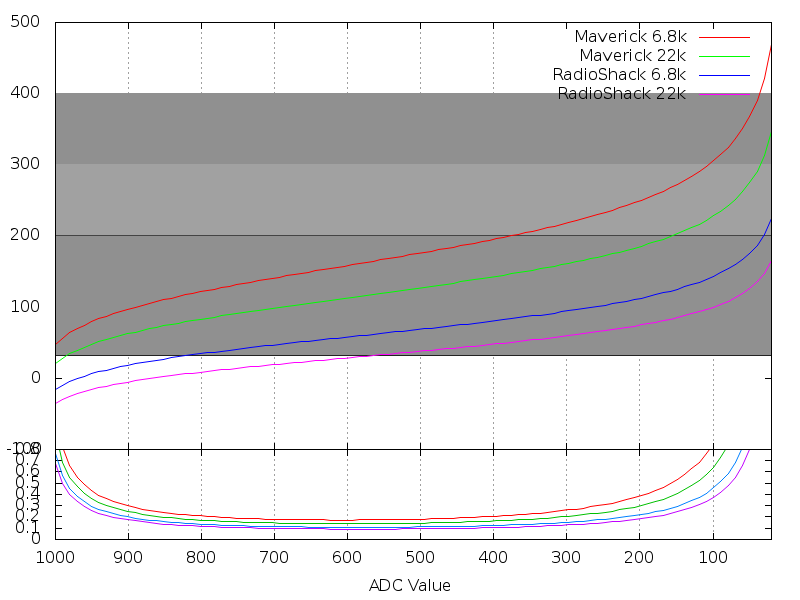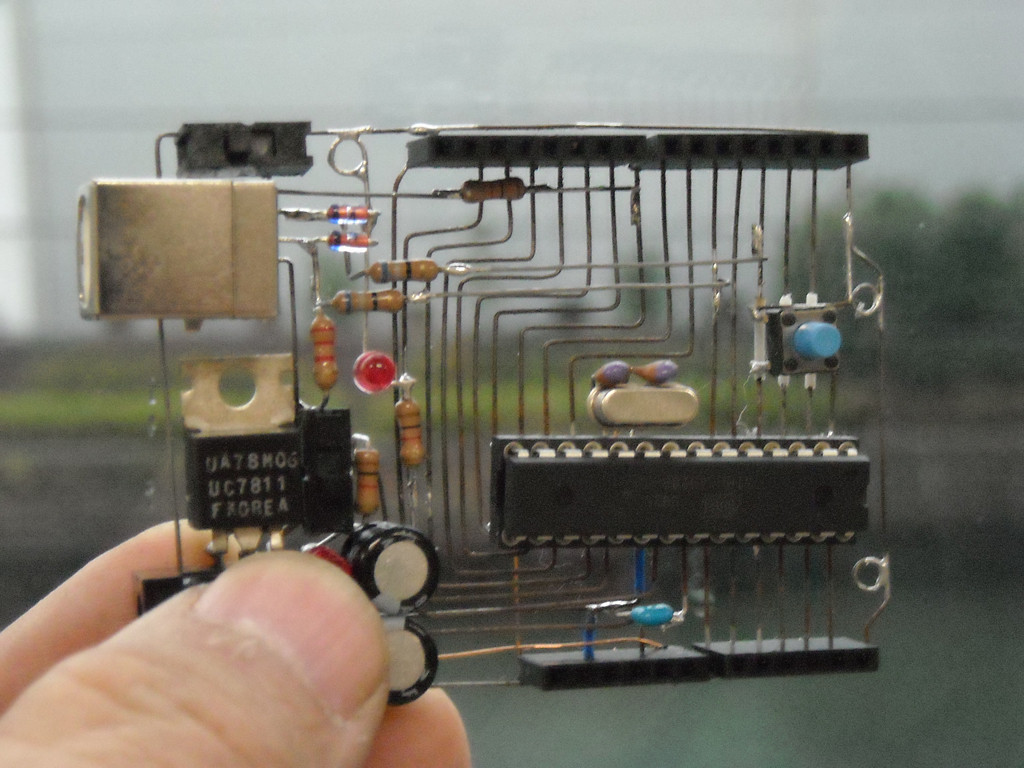...and one other question about the HM schematic.
I can't figure out why R13 (which is the balancing resistor for the ambient temp probe) is a 22K resistor. The way I understand that voltage divider theory, a balancing resistor like that should be (roughly) equal to the resistance of the thermistor at the center of the needed range.
And since we're using a 10k @ 25C thermistor, I was thinking that a 10k balance resistor would work better.
The most likely reason I was thinking for using a 22k here would be to reduce line numbers in an order (i.e. lower cost) figuring that it's close enough. Is that it? Or is there something else going on that I don't see?
I can't figure out why R13 (which is the balancing resistor for the ambient temp probe) is a 22K resistor. The way I understand that voltage divider theory, a balancing resistor like that should be (roughly) equal to the resistance of the thermistor at the center of the needed range.
And since we're using a 10k @ 25C thermistor, I was thinking that a 10k balance resistor would work better.
The most likely reason I was thinking for using a 22k here would be to reduce line numbers in an order (i.e. lower cost) figuring that it's close enough. Is that it? Or is there something else going on that I don't see?



